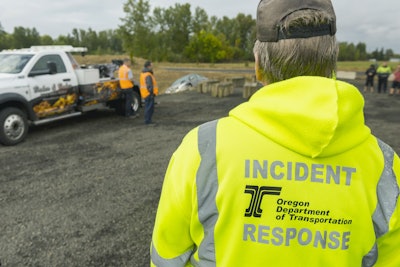
The Oregon Department of Transportation has landed in the political spotlight after an independent audit claimed it lacks sound procedures, organization and up-to-date financial software.
The Oregon Legislative Assembly recently commissioned an independent managerial review of ODOT from engineering and construction firms AtkinsRéalis and Horrocks to examine its delivery on major projects and its organizational structure.
The 20-page report, given to Oregon lawmakers in late May, covers many areas of the department, including its project planning and pre-development, decision-making, contract management and workforce development. The report was compiled through high-level reviews of ODOT’s structure and delivery processes as well as stakeholder interviews.
This audit arrives at a time when Oregon lawmakers are working to pass a transportation funding proposal, including raising the state’s 40-cent-per-gallon tax by 15 cents, according to a report from Oregon Public Broadcasting.
The report opens by acknowledging ODOT has faced “increasing demands and growing project complexity” in recent years, which has in turn “revealed areas where ODOT’s current practices and organizational structure could benefit from improvement.”
Part of this can be attributed, according to the report, to a larger pool of transportation revenue that came with Oregon’s House Bill 2017, growing public demand for accountability and new mandates for regional and intermodal coordination.
The report further alleges that ODOT has failed to consistently keep pace with the changes its faced in the last few years, resulting in cost overruns, schedule slippage, overlapping responsibilities between offices and uneven application of standards.
AtkinsRéalis and Horrocks also lists leadership turnover, lack of professional development pathways and use of outdated financial software.
Some of the report’s key findings are as follows:
- Decision-making is centralized at HQ and not delegated, while multiple review layers create bottlenecks.
- High turnover and staffing shortages have created a gap in internal knowledge and expertise, particularly with managing delivery risks for large projects.
- Financial tools are fragmented, causing delays and duplications that don’t match.
- Many procedures, such as legal review and design exceptions, have long approval chains and extend turnaround times.
- A recent reorganization created unclear lines of authority and communication barriers.
AtkinsRéalis and Horrocks delivered a long list of recommended short- and long-term fixes, including the following:
- Restructure the Urban Mobility Office into a Major Projects Group for handling projects over $99 million or are politically visible. The Major Projects Group would “bring consistency in project clearances, scope discussions/Intergovernmental Agreements with cities and counties, and mitigate risk through best practices for due diligence and contract typology.”
- Invest in site investigations and early scoping activities to better inform design decision and avoid delays.
- Develop an authority matrix identifying who has decision rights across project types, disciplines, and phases to reduce unnecessary escalation and empower staff to act within their scope.
- Standardize contract templates and terms and conditions on major projects for the three primary delivery contracts: Design-Bid-Build, Design-Build, and Construction Manager At-Risk.
The full report can be found here.












